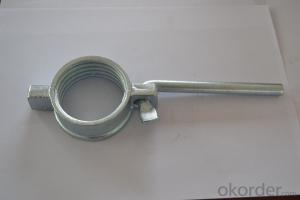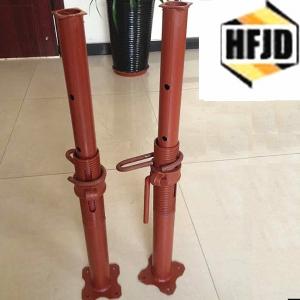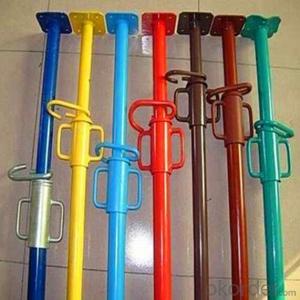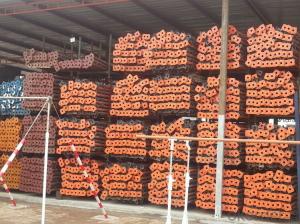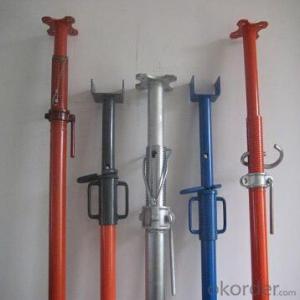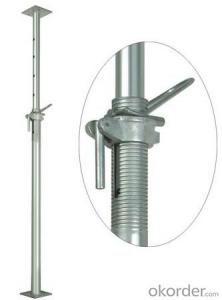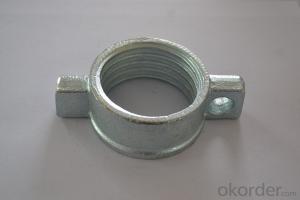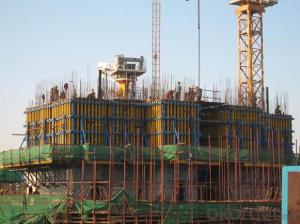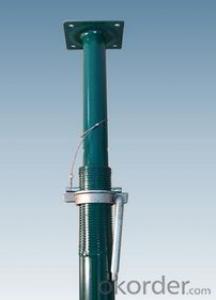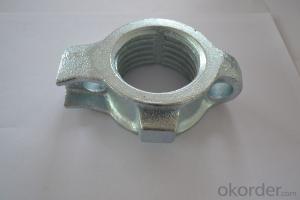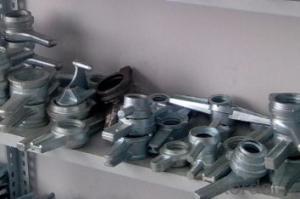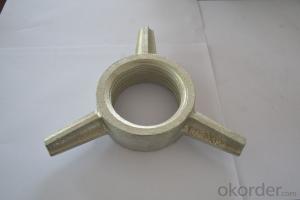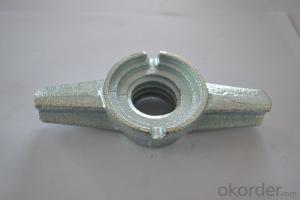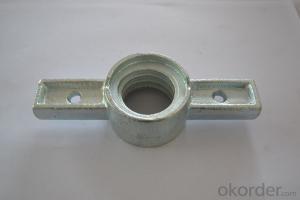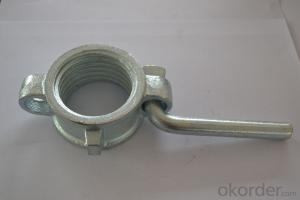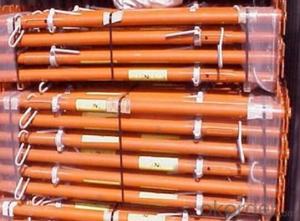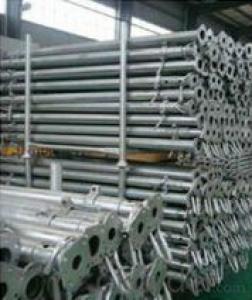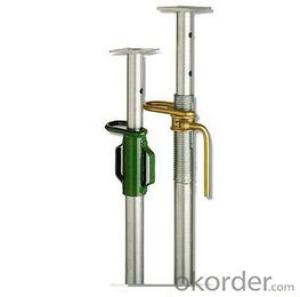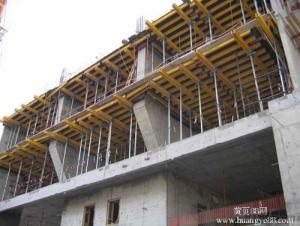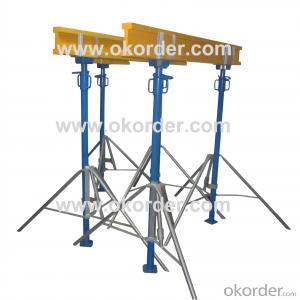OEM Two wing Butterfly Wing Nuts 8
- Loading Port:
- China Main Port
- Payment Terms:
- TT OR LC
- Min Order Qty:
- -
- Supply Capability:
- -
OKorder Service Pledge
OKorder Financial Service
You Might Also Like
Quick Details
| Model Number: | |||||
| Standard: | Type: | Certification: | |||
| Material: | Surface: |
Packaging & Delivery
| Packaging Detail: | Plastic bag, pallet packing, carton box, by customer's requirement |
| Delivery Detail: | within 30days after payment |
Specifications
Two wing Butterfly Wing Nuts
1>Excellent dimension accuracy
2>Finished: per your requirements
3>factory directly supply
Two wing Butterfly Wing Nuts
We supply kinds of metal parts totally according to clients' drawings and samples and special requirement.
1. Material: Ductile iron .
2. Sizes: Inner hole Dia 15/17mm.
We have different sizes ,types of wing nut to meet your needs, save your cost .
3. Weight: 0.35kg,thread pitch: 10.0mm.(or 6.35mm)
4. Surface: White Zinic , Yellow Zinic or painted, self color
5 Thread:casted or machine tap.
1. 12000M2 standard modern workshop guarantee production capability to satisfy the customers needs
2. Our Independent quality control department,Which make sure the quality of all products
3. Our efficient and experienced sales team ,provide friendly and thoughtful service for clients from all over the world
- Q: Can steel props be used in shopping mall construction?
- Yes, steel props can be used in shopping mall construction. Steel props are commonly used in construction projects to provide temporary support for structures, including shopping malls. They are adjustable and versatile, making them suitable for various construction needs, such as formwork support, load-bearing support, and temporary shoring. Steel props offer stability and strength, making them a reliable choice for supporting large structures like shopping malls during the construction process.
- Q: Can steel props be used for temporary support during suspended ceiling installation?
- Steel props can indeed be utilized for temporary support while installing suspended ceilings. They are frequently employed in construction to offer stability and ensure safety throughout various construction tasks. These props are height-adjustable and possess the capacity to bear substantial loads, rendering them suitable for supporting the weight of suspended ceilings. Their reliability and durability guarantee that the suspended ceiling will remain firmly in position during installation. Moreover, their adjustable characteristics permit precise leveling and alignment, resulting in a professional and precise installation. Hence, steel props are an appropriate option for temporary support during suspended ceiling installation.
- Q: How do steel props compare to steel columns?
- Steel props and steel columns are both structural elements commonly used in construction projects, but they serve different purposes and have distinct characteristics. Steel props, also known as adjustable steel props or acrow props, are temporary supports used to provide temporary stability to structures during construction or renovation. They are typically adjustable in height and offer flexibility in supporting loads. Steel props are easy to install, dismantle, and move, making them suitable for temporary applications such as formwork support, scaffolding, or shoring. On the other hand, steel columns are permanent load-bearing elements that provide long-term structural support to buildings or structures. They are designed to withstand significant vertical loads and transfer them to the foundation. Steel columns are typically fixed in place and are not adjustable in height. They are commonly used in multi-story buildings, bridges, or other structures requiring substantial structural strength. In summary, steel props and steel columns have different purposes and characteristics. Steel props are temporary, adjustable supports used during construction, while steel columns are permanent load-bearing elements providing long-term structural support.
- Q: How do steel props compare to aluminum props in terms of strength?
- In terms of strength and rigidity, steel props surpass aluminum props. Steel, being a stronger material compared to aluminum, exhibits a higher load-bearing capacity. This enables steel props to withstand heavier loads and offer superior support to structures or equipment. Consequently, steel props are commonly favored in construction and industrial settings where strength and durability are crucial. Conversely, aluminum props possess the advantages of being lighter and more resistant to corrosion in comparison to their steel counterparts. These characteristics make aluminum props suitable for specific applications prioritizing weight and rust resistance. Nevertheless, when it comes to sheer strength and the ability to handle heavy loads, steel props outshine aluminum props.
- Q: Do steel props require any additional support at the top?
- Yes, steel props generally require additional support at the top. Steel props, also known as adjustable steel props or acrow props, are commonly used in construction to support and stabilize temporary structures such as scaffolding, formwork, or falsework. While steel props are designed to handle vertical loads, they may require additional support at the top to ensure stability and safety. The additional support at the top can be provided through various means, depending on the specific application and requirements. One common method is to use timber needles or horizontal beams that are placed on top of the steel props. These beams distribute the load more evenly and provide a larger support area, reducing the risk of the props sinking into the ground or causing damage to the structure. Another approach is to use steel plates or base plates that are attached to the top of the props. These plates increase the contact area and provide a stable platform for the load to be distributed. Additionally, the use of spigot connectors or couplers can help secure the props to the structure or other components, enhancing stability and preventing any lateral movement. It is important to note that the specific requirements for additional support at the top of steel props may vary depending on factors such as the height of the props, the load they are supporting, and the environmental conditions. Consulting with a structural engineer or following the manufacturer's guidelines and recommendations is crucial to ensure proper support and safety.
- Q: Can steel props be used for temporary support during tunnel construction?
- Yes, steel props can be used for temporary support during tunnel construction. Steel props are commonly used in construction projects to provide temporary support to structures, including tunnels. They are adjustable, allowing for easy installation and removal, and can withstand heavy loads. Steel props provide stability and structural integrity during the excavation and construction process, ensuring the safety of workers and the overall success of the project.
- Q: How to adjust the ratio of steel support to X stable stress and strength design value
- 4, adjust the structure of the overall model to reduce the stress in the region;5, adjust the surrounding load, reduce the regional stress.Answer finished.
- Q: Do steel props have any safety features for preventing accidental collapse during adjustment?
- Yes, steel props are equipped with safety features to prevent accidental collapse during adjustment. These safety features typically include a secure locking mechanism, adjustable height settings with clear markings, and robust construction to withstand heavy loads. These features ensure stability and minimize the risk of collapse, providing a safe working environment for users.
- Q: Are steel props adjustable with remote control mechanisms?
- Remote control mechanisms are not typically employed for adjusting steel props. Steel props, also referred to as adjustable steel props or acrow props, are telescopic support devices utilized in construction for temporarily supporting beams, floors, and walls. They can be manually adjusted by rotating a threaded rod, allowing the prop to extend or retract to the desired height. Construction workers are responsible for on-site manual adjustment, hence remote control mechanisms are not commonly utilized in conjunction with steel props.
- Q: Can steel props be used in the installation of temporary power or utility lines?
- Indeed, the utilization of steel props in the installation of temporary power or utility lines is permissible. Referred to as adjustable steel props or acrow props, steel props are commonly employed in construction to furnish provisional support to structures or burdens. Their height can be adjusted, rendering them suitable for various applications, including the installation of temporary power or utility lines. Steel props provide stability and strength, rendering them optimal for sustaining the weight of power or utility lines during installation. They can be effortlessly adjusted to the desired height and have the capacity to withstand the load and stress accompanying power or utility lines. Moreover, their sturdy construction ensures durability and reliability, making them appropriate for long-term installations. Furthermore, steel props can be effortlessly disassembled and repositioned, allowing for adaptability in the installation process. This attribute proves particularly advantageous in temporary ventures where power or utility lines necessitate relocation or adjustment. However, it is crucial to guarantee that the steel props employed meet the designated load-bearing capacity and safety standards for the specific installation. It is advisable to seek guidance from a professional engineer or construction expert to evaluate the specific requirements and ascertain the appropriate type and size of steel props required for the installation of temporary power or utility lines.
Send your message to us
OEM Two wing Butterfly Wing Nuts 8
- Loading Port:
- China Main Port
- Payment Terms:
- TT OR LC
- Min Order Qty:
- -
- Supply Capability:
- -
OKorder Service Pledge
OKorder Financial Service
Similar products
Hot products
Hot Searches
Related keywords
